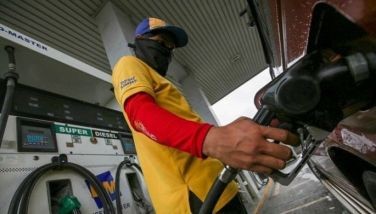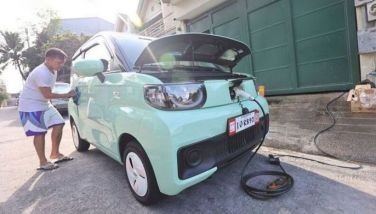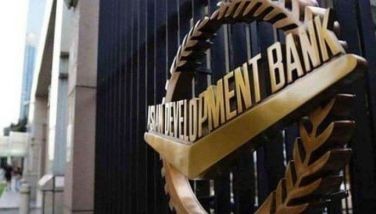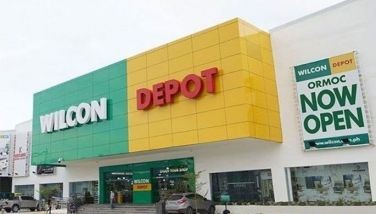Manufacturing vaccines

Sen. Dick Gordon had an interesting observation last week. The senator said that “in 1939, the Philippine Red Cross and the University of the Philippines donated vaccines for China.
“The vaccines were created in a serum and vaccine laboratory in Alabang, which was sold and repurposed into a mall in the latter part of the century. This laboratory produced tetanus and tuberculosis vaccines, and even snake anti-venom. We lost a valuable asset for the Philippines when we let this vaccine laboratory go.
“The COVID-19 pandemic situation calls for us to review our priorities in terms of R&D – in empowering our brilliant young Filipinos.
“We also need to support our scientists and healthcare workers financially so they won’t leave the Philippines. Hindi puwedeng binabalewala lang sila dahil araw-araw silang nagbubuwis ng buhay sa laban natin sa pagsugpo sa COVID-19.”
I googled a bit and found out from the Journal of the History of Medicine and Allied Sciences that “a large variety of sera and vaccines were developed and kept in stock in the serum laboratory of the Bureau of Science in the Philippines. In the laboratory’s early years, the preparation of anti-rinderpest serum and of smallpox vaccine constituted the bulk of its work, but it also issued diphtheria, plague, and tetanus antitoxins.
“By 1909, it was offering tuberculin; vaccines for cholera, anthrax, gonococcus, and Staph. aureus and S. albus; and sera for diphtheria, cholera, typhoid, plague, and dysentery. In 1913, anti-meningococcic serum was added to the list.
“Even carcinoma tissue from Filipino patients in the wards of the Philippine General Hospital was dried and pulverized at the serum laboratories to produce a vaccine against carcinoma. Of course, most of these products were experimental; their profusion indicates more enthusiasm for the potential of the new serology than any confidence in its current efficacy.
“But all the same, a few products were clearly effective. By 1918, the serum laboratory was producing annually enough vaccine virus to effectively vaccinate two million people against smallpox.”
Sounds like the story of railroads here. We had more kilometers of rail in the 1930s than today.
So, why don’t we have a facility, government or privately owned that produces vaccines? Indonesia has one. There is no good reason why we don’t.
My late father was a public health specialist who dealt with all sorts of infectious diseases. I remember that he, among other things, worked with vaccines. He talked about the facility in Alabang. But that was a long time ago. We don’t progress… we retrogress.
Still, I was so intrigued by the thought that we gave up a small vaccine production facility in Alabang for a mall. Goes to show the kind of faulty decision making of our officials through the years.
I also wondered why an entity like Unilab, the largest local drug manufacturer, didn’t see the need for one. After all, Unilab is a local multinational, with operations in Indonesia and other Southeast Asian countries. I saw Unilab products in Myanmar.
So, I asked someone in Unilab why, and this is their response:
“While Unilab currently has 10 manufacturing facilities in the Philippines, none of them can manufacture vaccines. A biological product like a vaccine requires an entirely different production facility from one dedicated to chemical-based medicines.
“It will require a substantial investment and a few years to build, validate, and get regulatory approval to manufacture and sell the product. Unilab, however, continues to work with the Department of Science and Technology and the Department of Trade and Industry to identify a technology partner to help establish a vaccine manufacturing facility in the country for purposes of supply security.
“However, such an initiative will not be for the current pandemic because the need for COVID-19 vaccine is immediate. It will be to prepare for future pandemics.
“Moreover, the science of COVID-19 vaccine is still developing and we need to wait until the clinical trials are completed to determine which one is best appropriate for the Philippines. It is that vaccine that Unilab would be interested in manufacturing in the Philippines, especially if required to be taken periodically.
“For the current pandemic, the best (and only option) for us is to import the vaccines from as many sources as possible, provided they are endorsed by the vaccine expert panel and approved by the FDA.
“Acquiring the vaccine, which is difficult enough because of the high demand and limited global production, may turn out to be the easiest part. The more difficult one is to make sure they reach vaccination sites all over the country without breaking the cold chain and that they are safely administered to patients.
“Equally difficult would be the risk communication because side effects like allergies are to be expected regardless of what vaccine is injected.
“The overall challenge is to vaccinate as many people as possible in the shortest time possible to prevent mutant strains from proliferating and, thus, possibly rendering existing vaccines inefficacious.”
What are lessons learned here? First of all, we need to start investing more on healthcare. It has often been observed that countries with better health infrastructure were able to produce better outcomes from the COVID-19 pandemic.
Secondly, we have to invest in trained scientific personnel. The Philippine Genome Center needs better support as it is now proving its worth during the pandemic. Not only has it produced test kits, it was also tasked to handle the sequencing of COVID-19 samples, an important task to detect variant strains.
Thirdly, there has to be a program that will encourage entities like local drug companies to invest and be able to produce an assortment of vaccines that we need other than against COVID-19. We should be able to produce all the vaccines we need for measles, polio, tuberculosis, smallpox, cholera, diphtheria, typhoid and other such diseases.
Health security, which our politicians are now finding out, is an important component of government programs. Our R&D investment had been stagnant at 0.15 percent of GDP.
Manufacturing some of our own vaccines, rather than depending on foreign sources, is something we can and must do. Let us see it happen now.
Boo Chanco’s e-mail address is [email protected]. Follow him on Twitter @boochanco
- Latest
- Trending





























